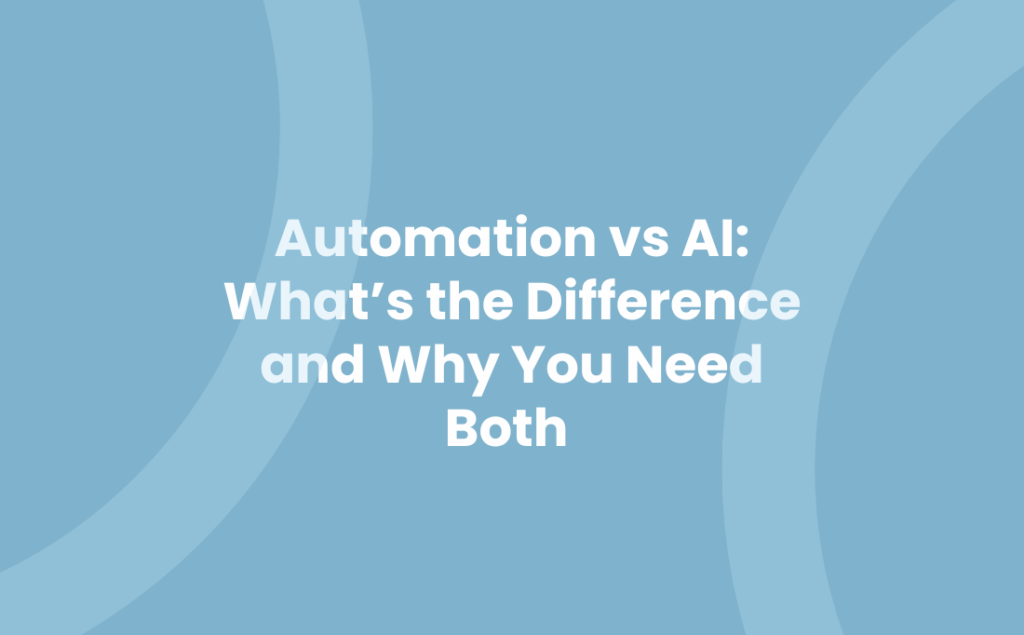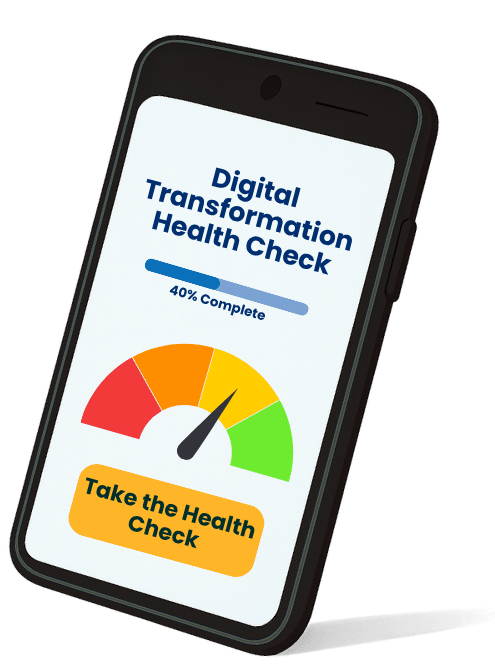The terms automation and AI are often used interchangeably. But while they can work beautifully together, they are not the same and understanding the difference is key to unlocking their full potential.
What Is Automation?
Automation is about streamlining repetitive, rule-based tasks. It follows a set of instructions and executes them consistently, without needing human intervention.
Examples of Automation in Action:
- Automatically sending a confirmation email when a customer places an order
- Moving documents to folders based on naming conventions
- Updating CRM records when a form is submitted
- Triggering invoice generation when a project milestone is marked complete
- Scheduling reports to run and send every Monday morning
Think of automation as your digital assistant – efficient, reliable, and great at doing what it’s told.
What Is Artificial Intelligence (AI)?
AI is about mimicking human intelligence. It can interpret data, learn from patterns, and make decisions based on context. AI doesn’t just follow rules, it adapts.
Examples of AI in Action:
- Reading and understanding customer emails to determine intent (e.g. complaint vs query)
- Validating legal documents like waste transfer notes against 11 compliance points
- Predicting customer churn based on buying behaviour
- Flagging anomalies in financial data that may indicate fraud
- Recommending products based on customer history and preferences
Think of AI as your digital brain – curious, analytical, and capable of learning.
How Automation and AI Work Together
While automation handles the workflow, AI handles the thinking. Together, they create intelligent systems that are both efficient and smart.
Examples of AI + Automation in Harmony
Supplier Invoice Processing
- Automation monitors the inbox and extracts attachments.
- AI reads the invoice, checks for accuracy, and validates against purchase orders.
- Automation posts the invoice to the finance system if everything checks out.
Customer Service Inbox
- Automation routes incoming emails to the right queue.
- AI interprets the message, gathers data from multiple systems, and drafts a reply.
- Automation sends the reply once approved by a human.
Sales Enablement
- Automation triggers a prompt when a project is marked complete.
- AI summarises the project, flags risks, and prepares a customer-ready handover note.
- Together, they reduce manual effort, improve accuracy, and deliver faster outcomes.
Why Businesses Need Automation, AI and the Blend
Why Automation?
- Saves time
- Reduces human error
- Improves consistency
- Scales easily
Why AI?
- Adds intelligence to processes
- Understands context and nuance
- Learns and improves over time
- Enables smarter decision-making
Why Both Together?
- Handles volume and complexity
- Frees up skilled staff for strategic work
- Delivers better customer experiences
- Future-proofs your business
As our Director, Jonathan Wilkins puts it:
“The real win isn’t just cost saving, it is scalability, consistency, and speed. Think of AI as an employee – you’ve got to train it, guide it, and it’ll get better over time.”
So, where should you start?
Automation streamlines. AI thinks. Together, they transform.
Whether you’re drowning in emails, chasing project updates, or struggling to spot customer churn, the right blend of automation and AI can turn complexity into simplicity. It’s not about replacing people, it’s about empowering them to do more of what matters.
At Avrion, we don’t just deliver technology, we deliver intelligent solutions tailored to your business. If you’re ready to move from manual to meaningful, let’s explore what automation, AI, or a blended solution some of each/a little bit of both could do for you.
AI is not just about knowing more, it’s about knowing faster. So, if you need a partner to cut through the AI noise and guide you through what AI can do for you, get in touch.



